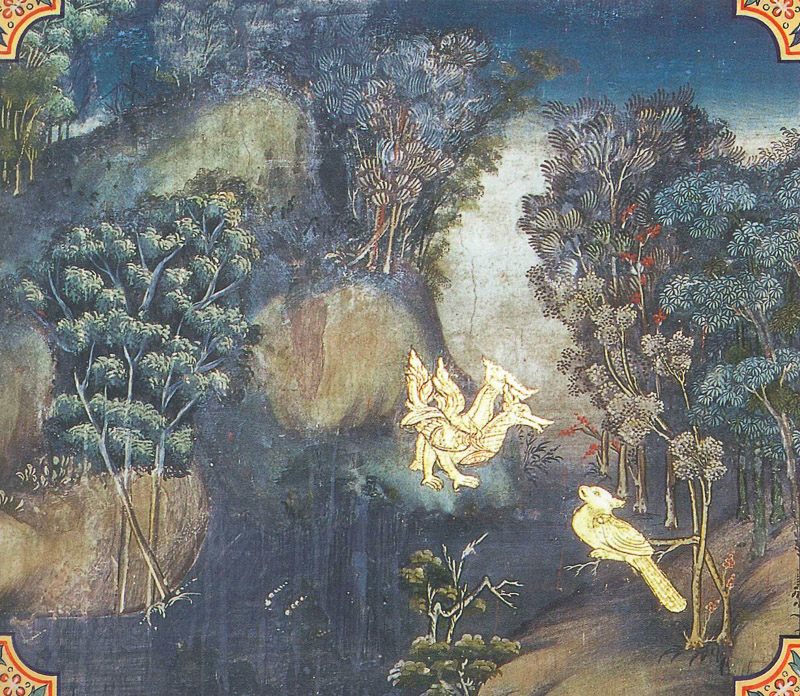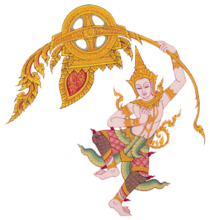
The Bodhisatta was once a parrot. He lived in a grove of fig trees in the Himalayas and was the leader of many other parrots. He was very happy in his tree, and when the fruit was gone he ate leaves and bark because he did not want to live elsewhere. The Bodhisatta’s contentment was so great that the home of Indra, king of the gods, shook. Indra wanted to test the Bodhisatta’s virtue, so he caused the tree to dry up until it was nothing but a dead, withered stump full of holes eroding into dust with each gust of wind. The Bodhisatta, however, remained atop the stump, eating the dust.
Indra was mightily impressed. Taking the form of a royal goose, he sat in a nearby tree and asked the Bodhisatta why, when all other birds flee fruitless trees, he stayed behind. The Bodhisatta answered that he was grateful to the tree for giving him food in the past and would not abandon a friend, even when it died. A pleased Indra offered the Bodhisatta a wish, and he asked for the tree to be given life again. So Indra took his heavenly form, and with a splash of water from the Ganges River, made it so.
In the Lifetime of the Buddha
One of the Buddha’s disciples spent the rainy season doing meditation out near a border village. The people there built him a hut and provided all his daily needs, so he was very happy. But after a month, the village burned down and people could not give him any of the good food they had before, so he grew distressed and made no spiritual progress.
At the end of the three months, the disciple returned to the Buddha’s monastery and told what had happened. The Buddha rebuked him for being greedy and said he should have been content to eat whatever food he could get. Then the Buddha told him this story to show that he himself had once been in a similar situation and remained happy. At the Buddha’s urging, the disciple went back to his meditation place. With this new understanding, he was able to become an arahant.
Indra was an earlier birth of Anuruddha, one of the Buddha’s top disciples.
